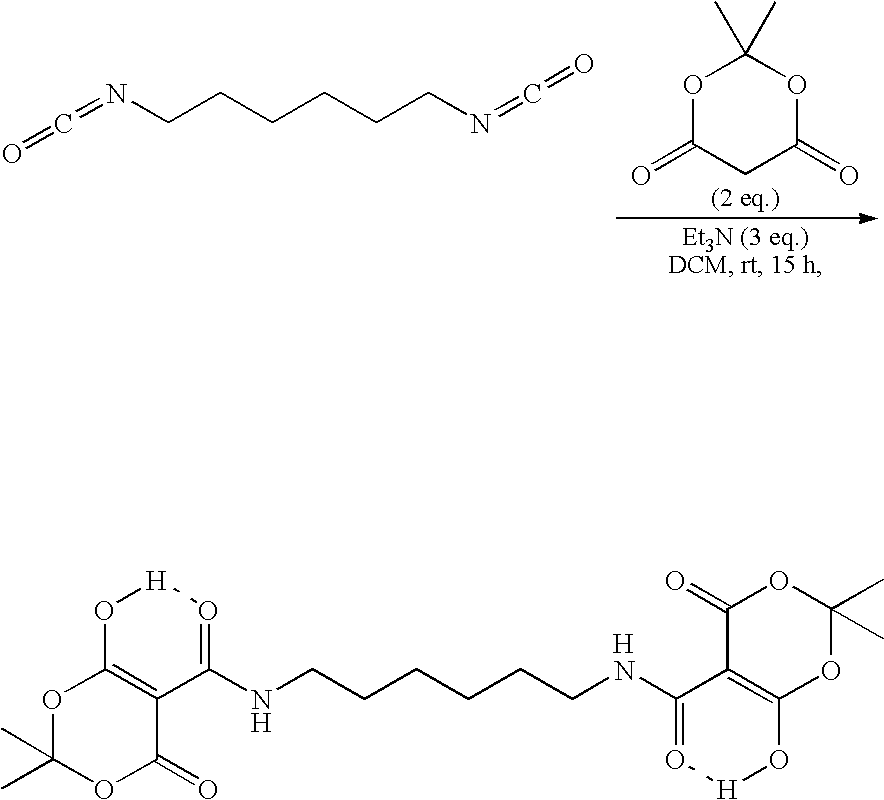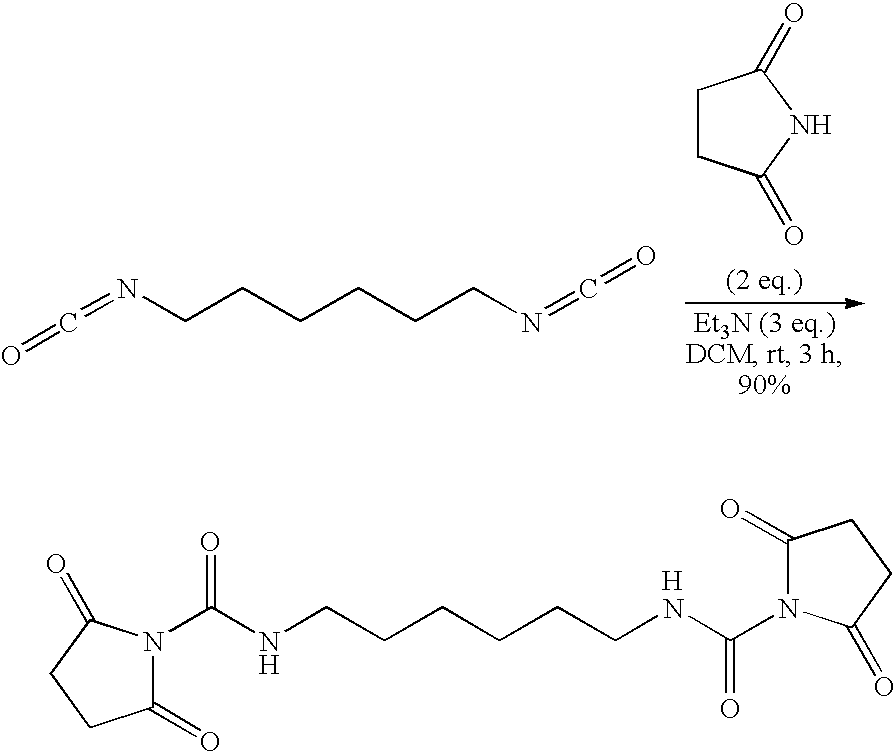Fabric treatment
- Summary
- Abstract
- Description
- Claims
- Application Information
AI Technical Summary
Benefits of technology
Problems solved by technology
Method used
Image
Examples
synthesis examples
Example 1
Synthesis of 2,4,6-Trichlorophenol Diester of Butanetetracarboxylic Acid
[0386] Butane tetracarboxylic acid (BTCA) (20.84 g, 0.089 mol) and 2,4,6-trichlorophenol (35.80 g, 0.18 mol) were weighed into a RB flask (250 cm3). Nitrogen was flushed through the flask for 15 minutes, then distilled THF (150 cm3) was added. After stirring under nitrogen for 30 minutes, diisopropyl-carbodiimide (29.0 cm3, 0.18 mol) was added dropwise over 20 minutes. The reaction was allowed to stir overnight under nitrogen. The mixture was filtered, washed with THF then stirred for one hour to ensure that formation of precipitate was complete. The solvent was removed to afford the crude product. This was washed several times with dichoromethane to yield the product upon removal of the solvent from the filtrate.
example 2
Synthesis of 2,4,5-Trichlorophenol Diester of Succinic Acid
[0387] Succinic acid (1.5 g, 0.013 mol) was dissolved in DMSO (50 cm3). 1,1′-Carbonyldiimidazole (5.0 g, 0.03 mol) was added and the mixture stirred for 30 mins at room temperature. 2,4,5-Trichlorophenol (5.05 g, 0.026 mol) was then added and the mixture stirred at room temperature overnight. The mixture was added to water, filtered, then washed with water followed by diethyl ether to yield a white solid (2.03 g, 33%) δH (500 MHz; CDCl3) 3.07 (4H, s, CH2—CH2—C(O)—O—) and 7.55 & 7.29 (4H, s, Ph)
example 3
Synthesis of N-Hydroxysuccinimide Diester of Succinic Acid
[0388] Succinic acid (2.0 g, 0.017 mol) was dissolved in THF (50 cm3) 1,1′-Carbonyldiimidazole (5.49 g, 0.034 mol) was added and the mixture stirred for 30 mins at room temperature. N-Hydroxysuccinimide (3.89 g, 0.034 mol) was added and the mixture stirred at room temperature overnight. The mixture was added to water, filtered, then washed with water then diethyl ether to yield a white solid (2.0 g, 38%) δH (500 MHz; CDCl3) 2.59 (8H, s, CH2—CH2—CO—N—) and 2.89 (4H, s, CH2—CH2—C(O)—O—)
PUM
| Property | Measurement | Unit |
|---|---|---|
| Mass | aaaaa | aaaaa |
| Electric charge | aaaaa | aaaaa |
| Electric charge | aaaaa | aaaaa |
Abstract
Description
Claims
Application Information
 Login to View More
Login to View More - R&D
- Intellectual Property
- Life Sciences
- Materials
- Tech Scout
- Unparalleled Data Quality
- Higher Quality Content
- 60% Fewer Hallucinations
Browse by: Latest US Patents, China's latest patents, Technical Efficacy Thesaurus, Application Domain, Technology Topic, Popular Technical Reports.
© 2025 PatSnap. All rights reserved.Legal|Privacy policy|Modern Slavery Act Transparency Statement|Sitemap|About US| Contact US: help@patsnap.com



